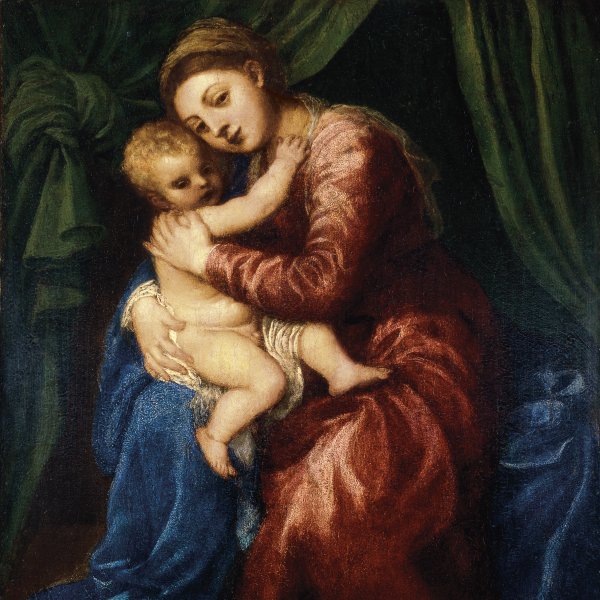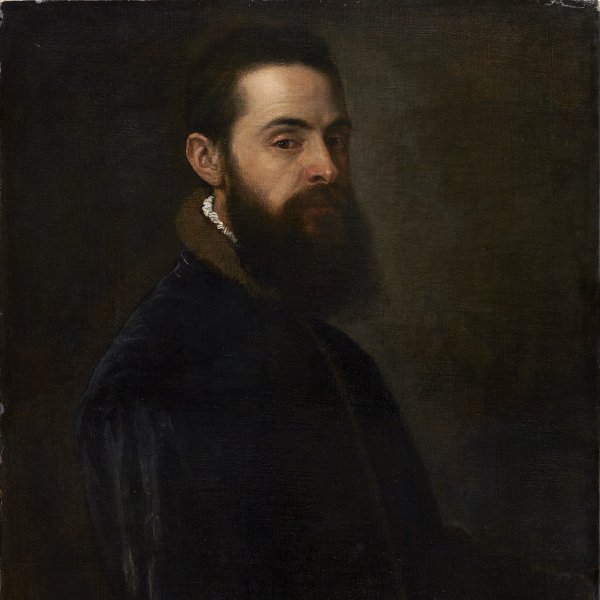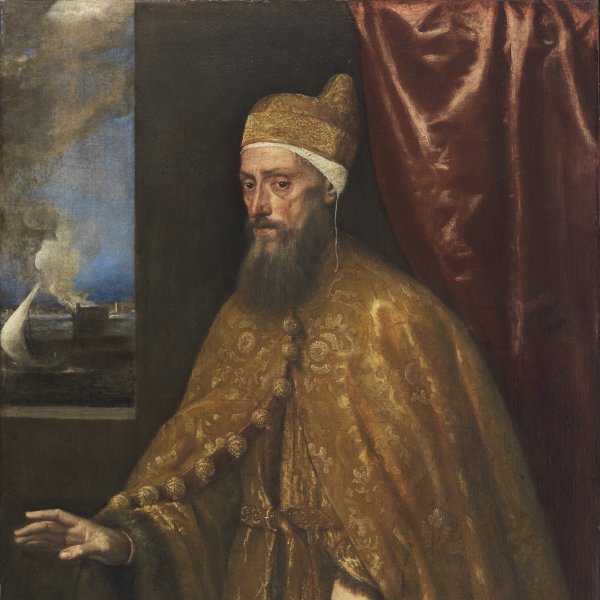The Penitent Saint Jerome
The Penitent Saint Jerome is dated to the final period of Titian’s career. During these years Titian continued to paint masterpieces, such as the great canvas of The Martyrdom of Saint Lawrence for the monastery of San Lorenzo de El Escorial; Tarquin and Lucretia, in the Fitzwilliam Museum, Cambridge; and The Flaying of Marsyas in the Kromeriz Palace, all dated to the last decade of his life. Also from this period are two famous works for Philip II commemorating the victory of the battle of Lepanto over the Turks in 1571. These are Philip II offering the Infante don Fernando to the Heavens, which also commemorates the birth of the Infante, and Religion succoured by Spain (both Museo del Prado, Madrid). Among the information on the end of the artist’s life included in his chapter on Titian, Vasari commented: “The last time I saw him was in his studio in Venice, in 1566, and I found him standing in front of a canvas, with his brushes in his hand”. Regarding the artist’s health, Vasari states: “He had a robust constitution, was almost never ill and never had a serious health problem; up to his death at nearly 100 he retained all his faculties, sight and pulse”.
Titian depicted Saint Jerome on various occasions, one of the earliest examples of which is now in the Musée du Louvre, Paris. In that horizontal composition of around 1530 the kneeling saint occupies the centre of the canvas in a clearing in a leafy landscape. Titian conceives the present version as a nocturnal scene in which the moon is hidden behind some thick tree trunks but still illuminates the sky with a great glow. The landscape that envelops the saint has been considered one of the artist’s finest and most poetic. Another version now in the Brera in Milan of around the mid-1550s was originally painted for Santa Maria Nuova in Venice and is considered the prototype for the present painting. It now has an arched top that was added in the 18th century. In the Brera version Titian included symbols that refer to meditation and the ascetic life such as the skull, hourglass, books and ivy twining over the rocks that form the saint’s altar.
In the present version, executed twenty years after the Brera composition, Titian omitted these elements and here focuses on the figure, which takes on a more important physical presence in the centre of the canvas. Jerome is enveloped in a wild landscape to which the colour range and brushstroke give a sense of unity. The artist emphasised the idea of penitence through the saint’s hands and gaze. Thus he holds a stone in his right hand for beating his breast, while his left hand rests on the book on which he meditates as he looks towards the crucifix supported on a long branch. At Jerome’s feet is a rustic flail made of branches leaning against the rock by his left knee, while the lion occupies the lower right corner, its head lost in the background. The colour range is narrow, almost monochrome, with highly subtle modulations of earth tones. Titian used these modulations to create a freely-painted area of landscape through which the bare canvas can be seen. The only strong patch of colour is in Jerome’s red tunic and in a small area of red in the sky. The use of red, which is particularly rapidly painted on the saint’s left leg, functions as another way of emphasising the principal motif of the composition.
Of similar date to the present work is the canvas of Saint Jerome in San Lorenzo de El Escorial. In that work, however, Titian expanded his range of colours and painted a landscape with intense shades of blue in the centre. He also used the symbols of the saint found in the Brera version and modified the lion in the corner.
A drawing was discovered on the reverse of the original canvas of this work, depicting the saint in the reverse direction to the final composition. This drawing was found when the canvas was relined in 1965.
Mar Borobia









